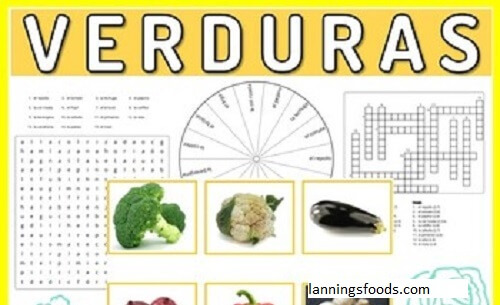Legumes in Asian Recipes: Investigating Legumes in Asian Cuisines
Legumes constitute a classification of plants including beans, lentils, peas, and chickpeas. They feature seriously in many cuisines around the world. In Asia, are a staple ingredient in several dishes, providing both nutritional value and versatility. Legumes whether in soups, stews, curries, or desserts feature an integral part of the Asian culinary landscape. Here are five FAQs that address questions about Asian dishes.

Role of Legumes in Asian Cuisine:
Legumes come in different forms across Asia, with the entire, split, sprouted, and flour types all being consumed. are rich in protein, fiber, vitamins, and minerals, which makes them a healthy staple in vegetarian and plant-based diets. Because of this adaptability, people use it in both savory and sweet dishes, cutting across the broad spectrum of cuisines prepared in the Asian kitchen.
1. Common in Asian Cuisine:
Some of the most popular in Asia are:
- Mung Beans: These small, green legumes are savory yet sweet. They are also very high in proteins and in fiber. Mung beans are used for Chinese dishes such as mung bean soup, and pancakes in Korea, while their sprouts are added to salads and other stir-fried dishes throughout the world.
- Soybeans: An integral part of eastern Asian diets, soybeans form the nucleus of many of their products such as tofu, soy milk, miso, soy sauce, and tempeh. Preparations like the Japanese hot pot and map tofu-easy Sichuan require soybeans or their derivatives for added flavor and texture.
- Chickpeas (Garbanzo Beans): Chickpeas feature in many Asian cuisines. They are most prominently featured in Middle Eastern and South Asian cuisine. For example, chana masala is India’s love chickpea curry. The same legumes also feature in Southeast Asian dishes besides finding their way into falafel and hummus in the Levant region.
- Lentils: These are the ones that are featured significantly in South Asian cooking, particularly in India and Pakistan, where they are utilized in dal-an extremely rich, meaty stew prepared with lentils. Lentils form a prominent source of protein for vegetarian dishes.
Black beans are a staple in Chinese and Southeast Asian cuisine; fermented at times, they are used in sauces or stews. Fermented black beans are an important ingredient in many traditional Chinese dishes, such as black bean chicken or mapo tofu.
Adzuki beans are small, red beans that are used almost exclusively as an ingredient in sweets in Eastern Asian cuisine, such as Japanese anko (sweet red bean paste) or Taiwanese red bean soup in Chinese cuisine.
2. Legumes in the Context of a Crossword Clue:

Crossword clues about legumes in Asian recipes often test knowledge of both cuisine and wordplay. A crossword clue may ask for a six-letter type of bean used in Japanese or Korean cuisine. “Edamame,” Japanese for young, green soybeans, or “adzuki,” referring to the small red beans commonly used in East Asian sweets, are two possible answers.
Legume-based crossword clues may center around specific dishes or ingredients as well, such as:
- “A hearty Indian stew made with lentils” Answer: Dal
- “Green bean sprouts used in Korean cuisine” Answer: Mung
- “Sweet red beans used in Japanese desserts” Answer: Adzuki
- The wide diversity of and the myriad ways they are used in the culinary world make them a gold mine of
- crossword puzzle clues that often call for a good knowledge of Asian culinary traditions.
Types of Legumes and Their Usage in Different Asian Countries:
East Asia:
- There are hundreds of East Asian dishes in which legumes are used both savory and sweet. As noted in the previous section, soybean is probably the most important legume in the region and forms the basis for soy products that include tofu and miso. Mung beans are also some of the most often used in Chinese, Korean, and Taiwanese dishes. Mung bean soup is one of the traditional Chinese dishes served during summer. Korea uses mung beans in the making of savory pancakes, called bindaetteok.
- Japan uses soybeans to make edamame (young soybeans), miso, and natto, which are fermented. Adzuki beans are used for desserts especially to make anko paste, where it acts as a filling in very famous treats such as mochi.
South Asia:
- A large variety of lentils are grown in South Asia, particularly in India, and they remain the central ingredient in several diets. Commonly known as one of the staples which is a stew or soup from lentils, peas, or beans, the Indian dish dal is found in many households in the world. A few varieties include toor dal, pigeon peas; masoor dal, red lentils; chana dal, split chickpeas; and urad dal, black gram. These legumes are boiled with many spices and herbs to acquire taste.
- In Pakistan and Bangladesh, lentils play an important role in the diet, and the daal chawal is one of the most often consumed dishes. Chana masala, which is a spicy curry of chickpeas, is also prepared, while besan is used in many savory snacks like pakoras, which are fritters deep fried.
Southeast Asia:
- Legumes are also largely used in Southeast Asian countries. In Thailand, for instance, mung beans are very useful in producing desserts and savory dishes. It can be produced, for example, into cake. In Vietnam, mung beans are used as filling in banh chung, which is a type of sticky rice cake. Indonesian people often use beans and in gulai which are spicy curries.
- Legumes are munched as well; in Malaysia and Singapore, there is a different range of dishes with it such as mashing lentils into soups and chickpea curries. In the Philippines, mung beans are used for ginisang monggo, a mung bean stew that contains pork and vegetables.
Legumes are rich in plant-based proteins:
They are an excellent food for vegetarians and people looking to include fewer animal products in their diets. Some have high fiber content, which can help with nutrient digestion and potentially lead to healthier blood sugar levels. In addition, many varieties of legumes are good sources of essential vitamins and minerals that include folate, iron, magnesium, potassium, and zinc.
- Proteins: are one of the best plant-based sources of proteins, thus supplying all the essential amino acids that support growth and maintenance in the body.
- Fiber: Legumes contain both soluble and insoluble fiber, which regulates the blood sugar level and promotes heart health.
- Vitamins and Minerals: are a good source of important for cell growth blood health-potassium-to support healthy blood pressure levels.
Five Frequently Asked Questions (FAQs):
1. What are the best legumes for a vegetarian Asian diet?
Soybeans, mung beans, lentils, and chickpeas are among the best options for a vegetarian Asian diet. They are so full of protein and fiber that they can easily substitute for meat. Tofu, tempeh, and edamame are all soybean-based products and can thus be some of your most versatile plant-based sources of protein.
2. How are legumes used in Asian desserts?
These beans are widely used in East Asia to prepare sweet pastes, which are added to many sweets. These pastes are used for mochi (Japanese rice cakes), dorayaki, which are a kind of sweet pancakes, and taiyaki, or fish-shaped cakes that contain red bean paste. In Southeast Asia, mung beans are commonly added to sweet soups and cakes.
3. Is a legume good for digestion?
Yes, legumes are very rich in dietary fiber; they help promote healthy digestion. Fiber aids in maintaining proper bowel movements, prevents constipation and is essential for the beneficial growth of gut bacteria within the body. Also, the high fiber content helps control blood sugar levels and has the potential to reduce certain digestive disorders.
4. Can I use beans as a substitute for Asian recipes?
Yes, often enough you can substitute different types of beans in Asian recipes. For example, if a recipe calls for mung beans, you can substitute lentils or chickpeas depending on the texture you want to get and the flavor you prefer, although the cooking time can vary from bean to bean and the flavor might be slightly different.
5. What is the significance of Asian health traditions?
Legumes are one of the most recognized nutriment components for which, for centuries, they have been highly valued in the traditional Asian practice of health. In Chinese medicine, mung beans cool the body, and facilitate detoxification, while lentils are known to strengthen the digestive system. Most Asian cultures have been predominantly vegetarian, and many promote plant-based diets while supplying staple proteins in a vegetarian diet.
Conclusion:

The role of legumes is crucial in Asian cuisine, allowing one to make a great variety of dishes from hearty stews to exquisite desserts. They have an exceptionally good nutritional value; they can be used in various dishes, such as soups, curries, or pastries, and they have a very rich culinary history. H are among the prized ingredients for everyday meals as much as for special occasion dishes, and I firmly believe they enhance the richness of Asian cooking with their unique texture and flavor in soups, curries, or pastries. With all their scopes for health-favorable applications, will likely continue to be one of the cornerstones of Asian diets for many generations to come.